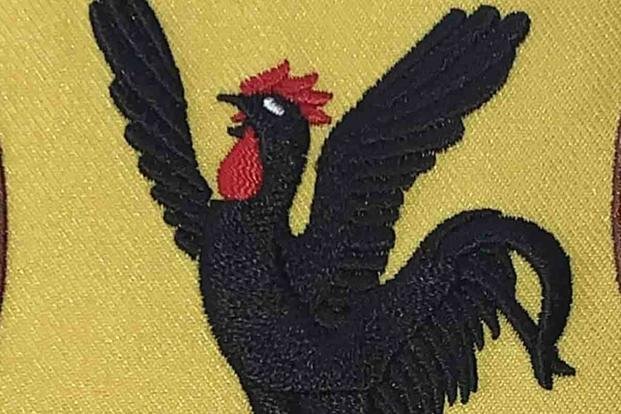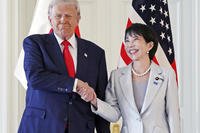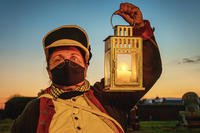Kadena Air Base on the Japanese island of Okinawa is one of the U.S. military's most storied overseas postings. It was first captured from the Japanese during World War II and has been in continuous use ever since. It's also alarmingly haunted.
One of its base housing units was believed to be the site of a murder-suicide in the 1970s and has been haunted ever since. One of the base's gates gets a regular ghostly visitor in uniform asking for someone to light a cigarette. There's also the spectral figure of an old Japanese man that will murder someone else if he sees you.
Read: Why Okinawa Is the Most Haunted Place in the Military
Kadena Air Base is the home of the 18th Wing, an Air Force unit that predates World War II. The legend of the Kadena Chicken is based on the 18th Wing's insignia, which features a black chicken, with its wings held high on a yellow background mixed with the unit's history during the Korean War. The legend is pretty gruesome, but luckily for the Air Force, it's also completely false.
By the end of November 1950, the Korean War was not going well for North Korea. United Nations forces had almost pushed the Communist North Koreans to the Yalu River, its border with China. On Dec. 1, 1950, the 18th Fighter-Bomber Wing deployed to an air base near Pyongyang from its home in the Philippines, to support the UN move north.
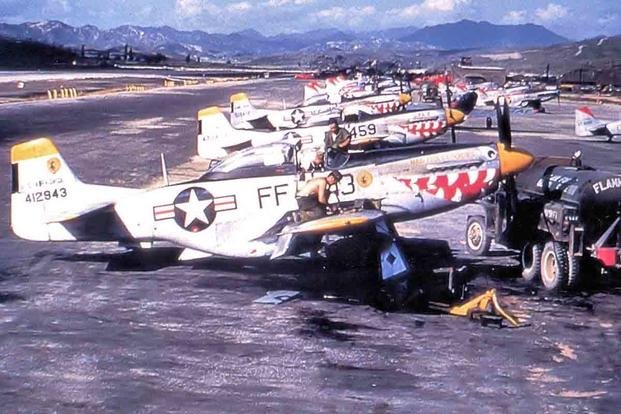
While the 18th was getting settled near North Korea's capital city, the Chinese People's Volunteer Army intervened in the war and began pushing the UN back toward the 38th parallel. The UN made its "fighting withdrawal" against the overwhelming force as it moved south at a rapid pace.
The speed with which the UN was forced to move caught many by surprise. By Christmas Eve 1950, 100,000 UN troops and 14,000 North Korean refugees had to be evacuated at the port of Hungnam, on the peninsula's east coast, or be destroyed. The (untrue) Legend of the Kadena Chicken begins around the same time, back in Pyongyang.
Pyongyang sits on the opposite side of the peninsula, pretty deep inside North Korea. It's said that the 18th Wing was surprised by the Communist counterattack and its pilots abandoned the airmen on the ground, evacuating the base in their aircraft. The ground crews were left undefended and faced the combined Chinese-North Korean assault on their own.
Reprisals from the Communists were said to be brutal. The men of the 18th Wing who were not killed outright were tortured and executed, with some being hung from the rafters of their aircraft hangers.
As a punishment, the story goes, the 18th Wing was forbidden from having a home station in the continental United States. The further humiliation comes in the form of its insignia: a chicken with its wings in the air, surrendering on a yellow background to remind the 18th forever of its cowardice in the face of the enemy.
None of this ever happened. The 18th Fighter-Bomber Wing also evacuated in the face of the Chinese intervention, first moving to Suwon Air Base (a few miles from today's Osan Air Base) and then being forced to Jinhae Naval Base on the peninsula's southern tip. An alternate version of the story says the Americans fled in disgrace from Suwon.
Except the Americans didn't flee in terror at all. The 18th received a Republic of Korea Presidential Unit Citation for damaging or destroying thousands of enemy vehicles. Aircraft from the 18th Fighter-Bomber Wing were in Korea for the duration of the war, only moving to Kadena Air Base on Okinawa in 1954. It earned the unit the nickname "truckbusters."
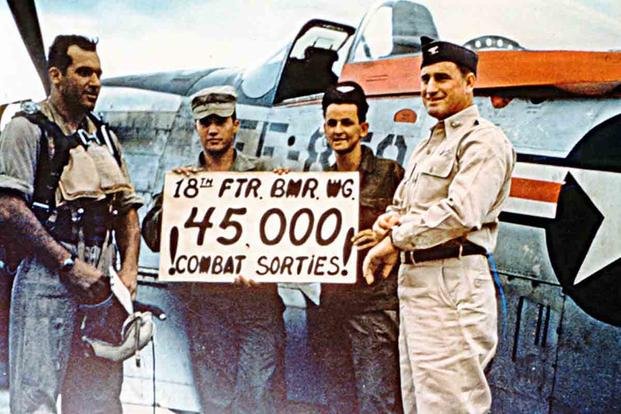
As for the cowardly chicken, it predates the Korean War. It was chosen in 1927 and first approved for use by the Army Air Corps in 1931, when the unit was still called the 18th Pursuit Squadron. The "chicken" isn't a chicken at all; it's a fighting gamecock. The unit motto "unguibus et rostro" is Latin for "talons and beak," meaning the unit fights with everything it has at its disposal.
-- Blake Stilwell can be reached at blake.stilwell@military.com. He can also be found on Twitter @blakestilwell or on Facebook.
Want to Learn More About Military Life?
Whether you're thinking of joining the military, looking for post-military careers or keeping up with military life and benefits, Military.com has you covered. Subscribe to Military.com to have military news, updates and resources delivered directly to your inbox.
